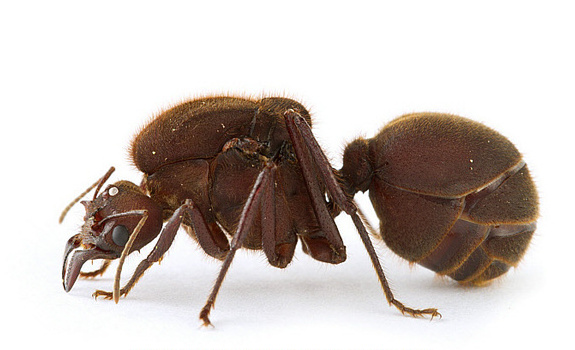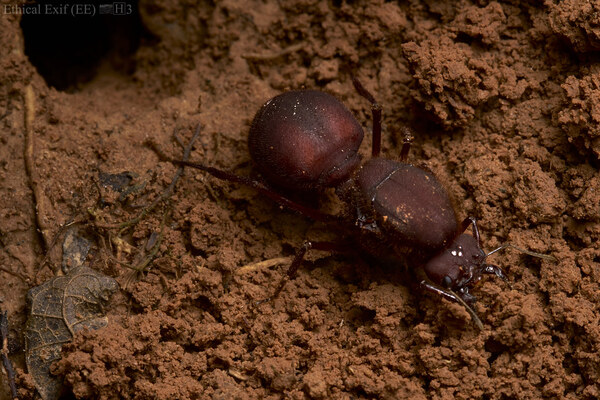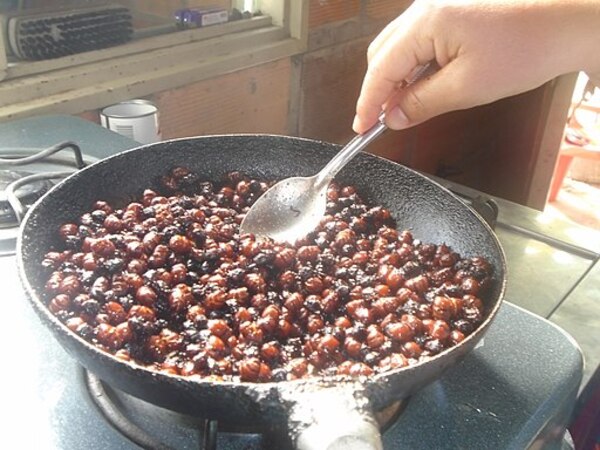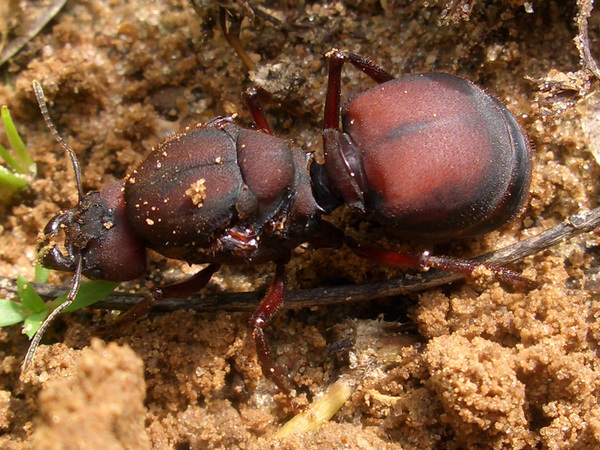Hormiga Culona, a large leafcutter ant (Atta laevigata), is a well-known delicacy in the Colombian region of Santander. Known for its unusual preparation and rich history, this ant is more than just an exotic snack. With its distinctive flavor and cultural significance, Hormiga Culona has become a symbol of the region, enjoyed roasted or fried, much like peanuts.

Big-ass ants, scientifically known as Atta laevigata, primarily feed on fungi that grow on decomposing plant matter, particularly rotting leaves. These ants are part of the leafcutter ant group, which means they cut and carry leaves to their nests. Once the leaves are brought back, they are chewed up and mixed with saliva to cultivate a fungal garden, which serves as their main food source.
In addition to fungi, they may also consume other organic materials found in their environment, but their diet is heavily reliant on the fungus they cultivate. This mutualistic relationship between the ants and the fungus is crucial for their survival, as the ants depend on the fungus for nourishment, while the fungus benefits from being propagated and spread by the ants.
The consumption of Hormiga Culona dates back centuries to the Guane people, indigenous to the northern Colombian region of Santander. The name "Hormiga Culona" literally means "big-ass ant" and refers to the large, egg-filled abdomens of the female leafcutter ants, which are the only ones considered edible. These ants are one of several species of leafcutter ants, specifically Atta laevigata.
Historically, the Guane Indians harvested these ants as an important source of protein. Their high fat, vitamin, and mineral content made them a valuable food source in a region where agriculture could be challenging. The ants are harvested during a very specific time of the year, typically between April and May, when the rainy season begins in Barichara. This is when female leafcutter ants, swollen with eggs, leave their nests to mate. These are the ants that farmers hunt, viewing them as a nutritious treasure that’s only available for a short window each year.
The tradition of harvesting Hormiga Culona has been passed down through generations, and it remains a cultural and culinary practice in Colombia to this day.

Hormiga Culona is not just a snack; it is deeply rooted in local tradition. For the Guane people, the ants were not only consumed for their nutritional benefits but also believed to possess aphrodisiac properties. The swollen abdomens of the female ants, filled with eggs, symbolized fertility. Consuming these ants, especially during the mating season, was thought to enhance sexual potency and improve fertility. This belief has led to Hormiga Culona being a popular gift at weddings, symbolizing the hope for a fertile union and many children.
Even today, many locals still uphold these traditions, with the ants being sold in markets, small shops, and even street stalls. They are most commonly roasted or fried, with a touch of salt, and enjoyed as a crunchy snack. For those looking to experience the ants in a more gourmet fashion, upscale restaurants in Colombia have incorporated them into modern dishes, elevating them from street food to haute cuisine.
Preparing Hormiga Culona is a simple yet unique process. Typically, the ants are fried or roasted, often while still alive, to prevent them from developing a bitter taste. They are cooked in large aluminum pots with a generous sprinkling of salt, which helps to enhance their flavor. As the ants roast, their wings and legs are removed, leaving only the crispy, reddish-brown bodies. It is in this crunchy abdomen that the flavor truly lies, offering a smokey, nutty taste.
Locals recommend opting for the roasted variety, as they are crispier and more flavorful than the fried ones, which can sometimes become soggy. In the streets of Santander, Hormiga Culona is sold in plastic bags, much like roasted peanuts, making it an easy snack to enjoy on the go.
For those not quite ready to eat them whole, some restaurants have devised creative ways to incorporate the ants into dishes. In Barichara, a restaurant called Color de Hormiga is renowned for its culinary use of Hormiga Culona. One of their standout dishes is Beef Tenderloin in ant sauce, a savory and flavorful entrée that marries traditional ingredients with modern cooking techniques, offering a less intimidating way to enjoy this regional specialty.

For centuries, Hormiga Culona has been more than just a food item for the people of Santander. It is a symbol of cultural heritage, fertility, and the connection between people and the land. Whether eaten as a snack or incorporated into gourmet dishes, these big-ass ants continue to hold a special place in Colombian cuisine. If you ever find yourself in the Santander region, trying this unique delicacy is a must—both for the taste and for the rich tradition that comes with it.

The price of big-ass ants (Atta laevigata) can vary significantly depending on factors such as location, season, and availability. Here's a general overview of pricing:
In Markets: In regions like the Peruvian Amazon, big-ass ants can be sold in local markets, often priced between $10 to $20 per kilogram (approximately $4.50 to $9 per pound). Prices may be higher during peak harvesting seasons due to demand.
Specialty Stores: In specialty or gourmet stores, particularly in urban areas, the price might be higher, often reaching $25 or more per kilogram, reflecting their status as a delicacy.
Restaurants: Some restaurants that serve dishes made with big-ass ants may charge a premium, with dishes featuring these ants priced anywhere from $15 to $30 or more, depending on the preparation and presentation.
Cultural Significance: In Colombia, Hormiga Culona (the local name for these ants) is often given as a wedding gift, adding to their cultural value, which can also affect pricing.
Keep in mind that prices can fluctuate based on market conditions, so it's always a good idea to check local sources for the most accurate and current pricing.
animal tags: Atta-laevigata
We created this article in conjunction with AI technology, then made sure it was fact-checked and edited by a Animals Top editor.